Three graduating seniors from SFUAD’s Creative Writing Department discuss what they’ve learned, and what they’ve got planned for the future.
Peter & the Goats
posted by Arianna Sullivan
Peter Romero, Santa Fe University of Art and Design director of facilities and security, treats his job like he treats his own home. He is on call 24/7 (he has to silence both his office and cell phone during the course of a 20-minute interview), he doesn’t leave until everything that needs to be taken care of is squared away (“Last Tuesday I arrived at 8 a.m.,” he explains, “and went home at 12:30 a.m.”), and, most importantly, his staff is like family.
Bellamy Brings It
posted by Arianna Sullivan
Albuquerque Poet Laureate Hakim Bellamy visited SFUAD Nov. 19 to give a public performance, as well as a workshop for Creative Writing students.
First Cut
posted by Arianna Sullivan
Papercut artist and SFUAD professor Valerie Rangel discusses her work.
Cliterific
posted by Arianna Sullivan
When Sophia Wallace first began to consider the clitoris as the subject-matter for her next project, her first thought was simply, “you can’t go there.” Once the seed had been planted in her brain, however, she realized that she “really didn’t have a choice.” The world was expressing an obvious need to be educated about the clitoris, and she would do the best she could to fill that need. As a part of that process, Wallace recently presented her work to a photography class at the Santa Fe University of Art and Design.
Reading Out Loud
posted by Arianna Sullivan
On Tuesday, Oct. 27, 14 freshmen and transfer students stood at the podium in the O’Shaughnessy Performance Space to share original writing with their teachers and peers.
A New Set of Eyes
posted by Arianna Sullivan
Imagine watching video footage of Olympic athletes training, dance rehearsals, skateboarding tricks—all from a first-person point of view. Google Glass teases the possibility of seeing the world through somebody else’s eyes. Last February, Google opened up a competition for the distribution of its new ‘glasses’ called Google Glass Explorer. In order to enter, contestants—who had to be US citizens over 18 and capable of throwing down $1,500 for a Google Glass—entered by tweeting at Google ‘#ifihadglass’ followed by a 50-word or less proposal. Google chose 8,000 winning tweets and began distributing Google Glass prototypes this spring and summer to the new “Glass Explorers.” As Google Glass became a tangible reality, the question of how the new technology would affect journalism became unavoidable. Was this going to be the next new technology to shake the journalism world? Tim Pool, a multimedia journalist who became well known for his live streamed footage of the 2011 Occupy Wall Street protests in New York City, received his Google Glass just days before heading to Turkey to cover the protests there last summer. What was most exciting to Pool about using Glass to film instead of other devices was obvious: Glass is hands free. Glass relies on Bluetooth or an Android to connect to the Internet, so Pool had to find ways to keep his streaming live (he often carries multiple SIMs so he can switch operators when necessary), but that did not detract from his excitement that he could film hands-free. In a Guardian article from July, Pool explains that, “when there’s a wall of police firing plastic bullets at you, and you’re running through a wall of tear-gas, having your hands free to cover your face, while saying ‘OK Glass, record a video’, makes that recording process...
Q/A W Cristina Kahlo
posted by Arianna Sullivan
Cristina Kahlo, great-granddaughter of Guillermo Kahlo and great-niece of Frida Kahlo, is a practicing photographer and member of Maestro Julio Galindo’s Platinum Print Workshop in Mexico City. She visited Santa Fe this October to attend the Alternative Photographic International Symposium sponsored by Bostick and Sullivan, Inc. and chatted with The Jackalope Magazine about her relationship to photography. Kahlo’s photographs will be on exhibit at the Santa Fe University of Art and Design’s Marion Center Gallery with four other photographers until Nov. 8. The following interview has been edited for brevity. Jackalope Magazine: When did you discover photography? Cristina Kahlo: My father was an amateur photographer—he was always playing with cameras. The darkroom was a place for adults. Children were not allowed. There was a special lock on the door so that children could not get in. So when I was 10 or 11 years old and my father invited me in, it was like I was being allowed into a forbidden room. He enlarged a picture of a family picnic and showed me how to submerge the photo paper in the chemicals, and that moment of seeing the image appear on the paper was magic. That is when I discovered what it means to make a photograph, and the moment when I fell in love with photography. JM: How did you pursue that newfound love? CK: My father died young. He was 42, and I was 13. But after he died, his darkroom was still in the house. A brother of a friend of mine did photography, and he said, ‘you like photography, don’t you,’ and he showed me the ABCs. That’s how I started printing. Then when I was 16 years old, I started at the Escuela Activa de Photographia, the only school...
Be Bold
posted by Arianna Sullivan
LA Times book critic David Ulin is loathe to give advice. Or so he said, during a Q&A during his visit to the Santa Fe University of Art and Design last week. However, the entirety of Ulin’s visit to SFUAD was an inadvertent how-to course for writers. First and foremost, says Ulin, “Writing is a practice, not a religion!” Ulin learned this by pursuing a job that challenges his writing skills daily. Ulin’s job and his personal writing are a part of the same world: Writing criticism is a “writerly practice,” and he works each day to craft reviews that are “also satisfying reading experiences.” That said, writing on a deadline, another aspect of Ulin’s job, “removes the preciousness” from the work. With a new story due every day, it is imperative for a writer to be able to crank words out and let them go as soon as the final draft goes to the editor. This is coming from a man who worked on a novel for nearly thirty years before he scrapped it, though he could have worked on it until he was eighty. “It’s important to remember that all writers are a part of a conversation,” says Ulin, “and if nobody ever sees your work, you’re not really taking part.” Which leads to another recommendation: Get your work out there. Ulin is a private writer. He never reads works in progress at public readings. Yet that is exactly what he did in O’Shaughnessy last week. “I keep sharing this piece at readings,” he said, “as if to light a fire under my ass to finish it.” Having a fire under the ass is important for getting work done, and one way to help keep it lit is to say “yes” to...
Picture This
posted by Arianna Sullivan
“Plain text,” says GigaOM Editorial Producer Rani Molla, “is just not how we think and learn anymore. We don’t memorize—we search. It’s just more efficient.” There are many ways to share and receive information, and Molla works in the visual realm of storytelling. Molla’s jobs range from helping co-workers post and arrange photos, to writing about design and how to access information visually, to creating data visualizations that help make statistics more reader-friendly and accessible. “From a photograph,” explains Molla, “we can infer an entire story.” Molla finds ways to visually represent information so that it is as interesting and engaging as a photograph. By showing statistics in chart, graph or diagram form, she makes data more approachable. It is often faster and easier to take information in visually than to sit down in front of a block of text that explains data through writing. Writing is still absolutely important—it provides analysis for the visual information—but having a comprehensible representation of the hard facts being analyzed can only benefit a written story. “Nobody can argue with numbers,” says Molla, “they’re objective—so if you can tell the story behind the numbers in a comprehensible way… that’s so exciting!” Diagrams and charts—especially when made interactive—can also make information more personally applicable to a viewer. If readers hover their mouses over a map to receive place-specific statistics, the numbers might carry more weight than if they just hear a national average. The interactivity of maps and charts is another way for people to easily engage with news and information. Still, even numbers can be presented in un-objective ways. Telling stories through charts and graphs is, like all narrative, about perspective. One study, published in The Washington Post, shows a notable increase in Netflix usage in the United...
Alumni Profile
posted by Arianna Sullivan
“As far as the Internet is concerned,” says Cordillera Productions Executive Director Jason Jaacks, “we are dealing with a Model T. There’s no V-8 here, And two weeks ago, we were like the Flinstones.” The Internet is still young in its development, but changing quickly. As it continues to grow and evolve as the leading tool for information sharing, documentarians like Jaacks are looking for ways to adapt storytelling to the Internet. Jaacks shared these thoughts in a lecture, “Documentary Without Borders: The Future of Storytelling in the Internet Age” on campus Oct. 3. According to Alenty, an Internet rating company, the average viewing time for a single web page is 33 seconds. Jaacks, a second-year student at the Berkeley School of Journalism and a 2009 graduate of the College of Santa Fe’s documentary studies program, is exploring storytelling techniques to engage viewers with attention spans shaped by the web. In order to create narratives that can hold an Internet user’s attention, Jaacks is experimenting with telling visual stories that have multiple narrative arcs and points of entry and that are interactive for the viewer—essentially interactive online movies. Jaacks cites Hollow as an example and source of inspiration for multimedia visual documentaries. The ‘movie’ explores the stories of more than 30 residents of McDowell County, W. Va. Online, Hollow consists of several visual timelines, made up of still and moving images, which can be scrolled through at the viewer’s leisure. Along the way are links to the detailed narratives of the stories featured on the timeline. The first time that Jaacks visited Hollow’s website, he spent two hours on it, putting the 33 second average viewing time to shame. Jaacks began telling stories through several mediums with his senior thesis as a student at CSF. His...
A Better Story
posted by Arianna Sullivan
For Santa Fe-based documentary photographer David Scheinbaum, art is at its finest when related to social issues. “To bring attention to some of the ills and inconsistencies of society,” says Scheinbaum, “is to use art at a higher level.” Scheinbaum’s newest book, Hip-Hop: Portraits of an Urban Hymn, is a collection of photographs of hip hop artists that sheds light on the “ills and inconsistencies” of society’s general view of hip hop culture. Scheinbaum’s book depicts a community that, contrary to its reputation, connects art to social issues. Scheinbaum first saw the discrepancy between mainstream media’s representation of hip hop culture and the actual work coming from hip hop artists 13 years ago when he drove his 12-year-old son and several of his friends to a hip hop concert at Albuquerque’s Sunshine Theater. Scheinbaum stuck around to see if the scene was appropriate for the kids and was struck by the positive atmosphere of the concert. He began to attend more shows, bringing his camera with him to try to capture the socially responsible, relevant and dynamic scene he witnessed again and again. As Scheinbaum grew closer (both literally and figuratively—he eventually gained access to the stage and backstage areas for better shooting angles) to the hip hop performers who visited Albuquerque, he realized that not only is their art form inextricable from social issues, it is much more complex and involved than most outsiders realize. Hip hop, like most creative cultures that begin at the fringe of society, arose out of a necessity to express the inequality being experienced by the marginalized. In an essay in Scheinbaum’s book, Gaye Theresa Johnson, an associate professor of black studies at UC Santa Barbara, explains that the art form originated as and still is “a serious...
The Surprises in Poetry
posted by Arianna Sullivan
“Please don’t be too polite,” said Joanne Dwyer, after reading the first of several poems from her first book, Belle Laide. “I want poetry readings to have a little more life in them. Be yourself… heckle me a little!” Before her reading began on Tuesday, Sept. 24 at SFUAD’s O’Shaughnessy Performance Space, Dwyer had admitted she was nervous, telling a friend that normally she spends “days and days and days not seeing anybody.” Once in front of the podium, however, she commanded the audience with a combination of humor, naked earnestness, and a reading voice that gave no sign of shaking. Dwyer straddles these sorts of dualities— internal shyness and outward composure—in her writing as well as her life. On one hand, she loves the fragmentation and collage of poetry, the way that “words and how we string them together are our tools as writers.” The rules in poetry are different, Dwyer says, so she feels free to let “imagination reign free to create image, sound and tonality without the normal everyday mundane rules of language.” At the same time, however, Dwyer admits that maybe the fragmentation and shorter form of poetry just matches her attention span better as a writer than fiction would. She loves reading fiction—making an effort to read Marquez’s One Hundred Years of Solitude annually—but says that, “the idea of writing a plot is just terrifying.” Her poetry, she explains, does not look for a truth in the way that a novel might. “Sometimes,” she says, “even I couldn’t tell you what the hell it’s about—that’s the magic of poetry, but sometimes I wonder if it’s to my detriment as a writer, if I’m just hiding behind the language.” Still, Dwyer is praised for her stream-of-consciousness and vocabulary-rich writing. She writes, says Creative Writing Co-chair Dana Levin, who taught Dwyer as a student at the College of Santa Fe, “in a way that tracks how the mind thinks. It is associative rather than linear.” Dwyer keeps this interesting by avidly reading up on everything historical, mystical and etymological that catches her attention and then working them into her poems. The mind, especially when its imagination is unfettered, is full of surprises. “The poetry that stays with me, that gives me an ecstatic juice,” says Dwyer, “is poetry that surprises me.” Dwyer both feeds and welcomes these surprises in her own writing by reading extensively, watching the world around her, and letting her own imagination string them together on the page. Dwyer, a 2005 graduate of CSF in creative writing and literature, does not lament how little time she has to write like many writers do. A mother of two, Dwyer’s says that being a mother made her a better writer, and visa versa. She recalls hearing a quote from Toni Morrison in which she says that she has written novels and won prizes, but really she neglected her son. “This really surprised me,” says Dwyer, “because I think that when there’s tension in your life, and you’re really living in the real world at the same time that you’re creating, you fight harder for that creative time.” When Dwyer began to feel that she’d spent enough time indulging in the reclusive act of reading and writing—for which she felt very lucky—she became involved in the Brooklyn-based Alzheimer’s Poetry project. “It just seemed like time to give something back,” she says. She would read poetry out loud to dementia patients in nursing homes, many of whom were losing their mental capacity for language. Dwyer found this process rewarding on many levels, and still makes regular visits to nursing homes around New Mexico. “Some of them had to memorize poems when they were young,” she exclaims, “and they remember them when I start to read. The whole thing becomes a sort of call and answer.” The return to dignity—let alone language—that she sees in the elderly, who...
Just Say Nott
posted by Arianna Sullivan
“Be prolific and competent,” says Santa Fe New Mexican education reporter Robert Nott about working as a journalist, or just about being a person in general. This, he explains, will take you far. The New Mexican hired Nott as an administrative assistant because he could type 100 words a minute. Nott also had a history of working in the theater, which prompted the arts and culture editor to assign him a theater review. Nott wrote the story, the editor told him he was a natural born writer, and he has been a reporter since. This story makes working as a journalist—even being hired as a journalist—sound embarrassingly easy, but keeping at it requires Nott’s considerable energy and focus. Nott is busy, not just as a journalist, but working on his own creative projects on the side; he has three, almost four books out, and regularly writes and directs plays. In all of his work, Nott believes in the importance of a sense of humor; he is a creative person who loves learning; and Nott is a constant advocate of exactitude, accuracy and efficiency. When it comes to his journalism, sometimes he has to “amuse myself into a story,” by writing a crazy opening for an article just to get interested and “keep it fresh,” so to speak.“If you’re able to laugh at things,” says Nott, “the days just keep getting funnier and funnier.” This appreciation for each day being a fun—or funny—new adventure is a part of what keeps Nott in journalism. “I could go back to bartending, or be doing something different,” says Nott, “and still have time to be directing a play at the Santa Fe Playhouse, or helping to start up a newspaper at a middle school, because I’m creative and I...
Q/A w Larry Hinz
posted by Arianna Sullivan
Larry Hinz, president of the Santa Fe University of Art and Design, has seen the school go through major changes since 2009. Here he answers some questions about how the school is growing, his vision for the future, and what it is that makes SFUAD special. *The following interview has been edited for conciseness. JM: How do you think SFUAD has changed since you began as president? LH: We’ve had an incredible 3 1/2 to four years of transition. We’re at an exciting place in time for this school. We have over 800 students, and the campus seems more alive—I walk across campus and I see students, so it’s really good for me to have that contrast to what it was like four years ago when we were trying to save the school. The student body is the most talented that I’ve seen since I’ve been here; it’s an engaged, energetic dynamic group of students that we have here and the faculty are really jazzed about that. I also think the campus looks really good; the quad is more welcoming than it was two years ago, for example. We will continue to make improvements to the campus and the buildings as time goes on. Also, we do a satisfaction survey every April, and student satisfaction is way up. There are common themes: students love the faculty, love the classroom, love the courses, love the facilities. Some of the negatives continue as well, like the cafeteria and the dorms and student activities, but this year has been a huge improvement overall. Another area that we track closely is student retention rates. That has also shown consistent improvement over the last year. I think this goes back to that engaged student body. Overall, the group of kids that are...
Inside Zozobra’s Security...
posted by Arianna Sullivan
I have been to Zozobra many times in my life, but never as early as 3 pm when, it turns out, the gates officially open. The first most apparent aspect of the field—as people refer to the baseball field in Fort Marcy Park, which hosts the burning of the great big white puppet of gloom—is the abundance of security moving about the place. Already the parking lots around the field are closed off, and men in neon yellow vests that read ‘SECURITY’ across their backs are monitoring the pedestrian entrance between temporary metal barricades blocking vehicles from entering. This entrance is followed by a security corridor between tables, where I am patted down (or prodded with a magic metal detector wand, depending if I end up with the woman on the right or the woman on the left who is checking my bag and my person), which spits me out at another metal fence with a narrow entrance managed by more yellow-vested people scanning tickets electronically. Finally I reach the bridge across an arroyo—another corridor—that will spit me out at… the field. But first I must stop at the bridge’s entrance where yellow-vests will cuff one of my wrists with a lime-green band which will prevent me from being accosted by more security on the inside—this is their signifier that I have entered the event by the correct process of checking and being herded along by yellow-vested security, or, more simply, that I have paid the entry fee. Once I am finally through this series of corridors being overseen by yellow-vests, I expect to be home free—I have arrived at my destination and can relax—but the field, only spotted at this early hour with picnickers and die-hards who will be here from 3pm, when a...
Enrollment Snapshot
posted by Arianna Sullivan
By Arianna Sullivan The 2013-‘14 school year began with rumors that the Santa Fe University of Art and Design had suddenly increased its student numbers by the hundreds. There were students momentarily camped out in King Lounge because the dorms had been over-booked, and students received an email from student life before the first day of classes reiterating that each meal time consists of a two-hour block in an attempt to cut down on the long lines already forming in the cafeteria. It was clear from the get-go that student numbers were up, but by exactly how much remained to be seen—even by enrollment staff—until the add-drop period ended on Aug. 30. The magic number of new students: 430. The incoming students are divided into domestic (262), international (19) and network (149). The total number of new students has increased from 18 in 2010, when the school officially became SFUAD, so clearly progress is being made. How exactly are these numbers increasing? Christine Guevara, SFUAD’s executive director of student operations, explains the ins and outs of the enrollment process that yields these numbers. While SFUAD is a Laureate International University network school, its enrollment process happens internally. The university has six field reps, or representatives of the school, who visit high schools to attend college fairs and talk to college counselors and students. These representatives are located in Northern California, Southern California, Arizona, Colorado, Texas and New Mexico. The target states are concentrated in the west and southwest because studies by higher education consultants such as Noel-Levitz show that students are becoming less and less likely to travel further distances for undergraduate education. SFUAD also enlists its department chairs to travel around the country to hold workshops and introduce the school to high school...
John Willis: Storyteller...
posted by Arianna Sullivan
John Willis does not consider himself a photojournalist, or even strictly a documentary photographer. Willis, who teaches photography at Marlboro College in Vermont, has collections of work that would be hard not to coin as documentarian, but he sees a distinct differences between the types of storytelling that photographers can do. “There are a lot of ways to experience and to explore storytelling,” he explains, “and for me, it is always connected to something I’m experiencing—I choose my topics out of a need to work through my own stuff emotionally.” At the same time, Willis is acutely aware of the responsibility that comes with storytelling—perhaps even more so than many journalists. While he takes his pictures “to understand how I feel about things in my life,” Willis believes that, “if you are taking pictures of somebody, telling stories about somebody, you are an outsider, because it is not you that the story is about.” As an outsider telling somebody else’s story—or taking a photograph of somebody else—you have a responsibility, Willis believes, to that subject. You are responsible for telling their story to the best of your ability, honestly and respectfully, so that ultimately you will help others develop an empathic understanding of that subject. For Willis, this extends even further than just sharing his own photographs. For Willis, the difference between a journalist and a documentarian boils down to time. A documentarian affords themselves more time with their subject, something a journalist being paid by the story may not be able to do. “I have the luxury of making my images because they’re what I’m drawn to,” Willis explains, “because I make my living as a teacher.” When Willis sells an image, he thinks of it more as “extra-credit” than another step along...
Art and Community
posted by Arianna Sullivan
Nicholas Chiarella, a Santa Fe based artist and contributing faculty member at the Santa Fe University of Art and Design, moved into his loft apartment on Santa Fe’s west side in November of last year. Within five weeks, Chiarella was hosting “Sit Wherever You’d Like,” a house-show of the sort that seems to be at the heart of Santa Fe’s community of young and emerging artists.
NMSA Theater
posted by Arianna Sullivan
It is opening night, the house is open, and the set is not even finished. The director is exasperated. His stage manager informs him that the set was not finished because they “ran out of money.” “You finally get used to one way of doing things and they up and change all of the rules on you,” he exclaims. His writer, who is pacing the stage with loud nervous high-heeled clicks, turns on him. “There are no rules in art!” she shrieks, sounding half-insulted and half-horrified. The two are interrupted by their stage manager, who is trying to delicately remove them from the stage so that their play can commence. “There shouldn’t be,” she says, “but those days are past.” She shoos them off stage, the house lights dim, and the play within the play Gun Shy is finally allowed to begin. Gun Shy is a comedy written and directed by Joey Chavez, and performed by high school theater students at the Santa Fe charter school New Mexico School for the Arts. The play breaks the third wall and brings up questions about what constitutes art, and what is or isn’t allowable in art, over and over again. The answers to these questions, however, are perhaps more apparent in the people behind the play than the script itself. Before their performance, the cast paced, stretched, and applied last minute make-up or costume touch-ups while practicing a few last line-throughs—reciting their lines in order without blocking or acting through the entire play. Their director and teacher Joey Chavez entered the room intermittently and watched them intently, without interrupting the focus coursing through his students. Cris Lannucci, an NMSA senior who plays the author of the play within the play, is eager to sit for an interview,...

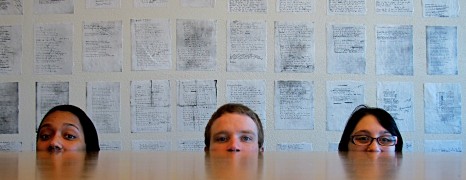
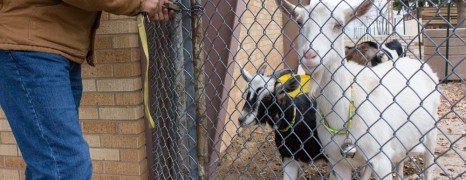
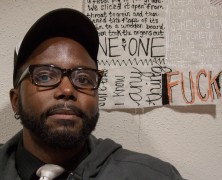
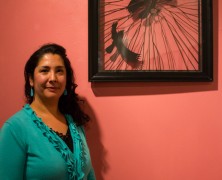
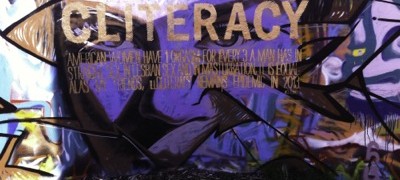
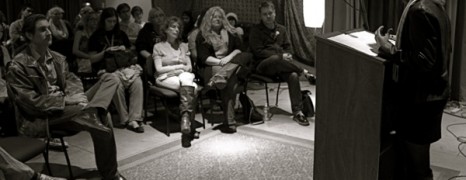




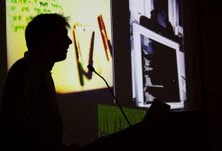
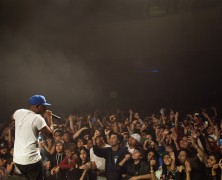
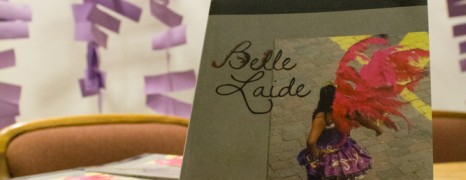

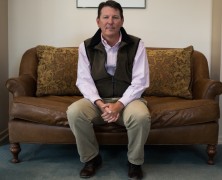

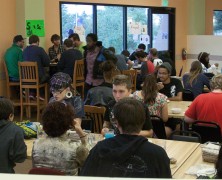
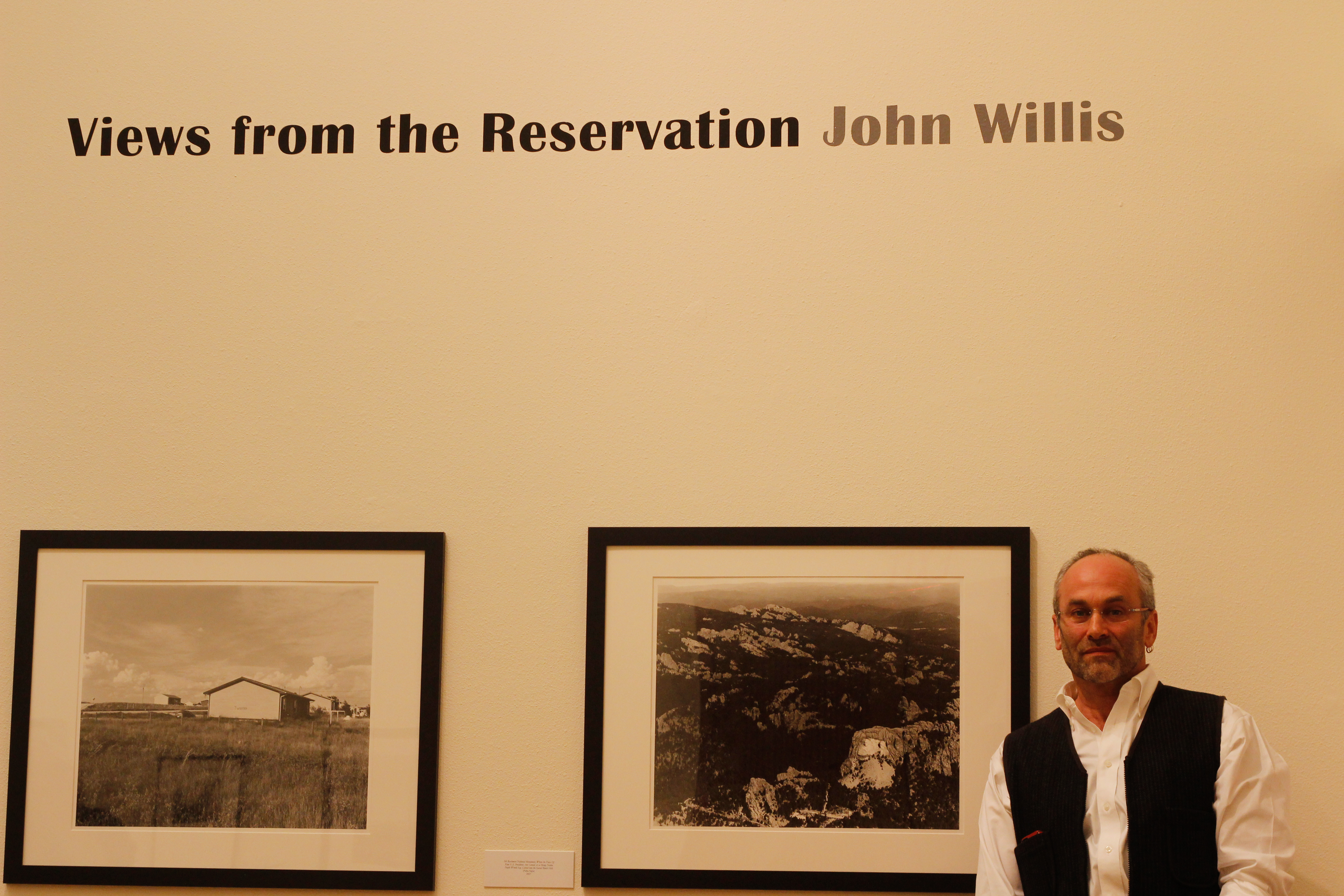


 Jackalope Magazine is the student magazine of Santa Fe University of Art and Design. Building on the interdisciplinary nature of our education, we aim to showcase the talent of our university and character of our city.
Jackalope Magazine is the student magazine of Santa Fe University of Art and Design. Building on the interdisciplinary nature of our education, we aim to showcase the talent of our university and character of our city.
Recent Comments